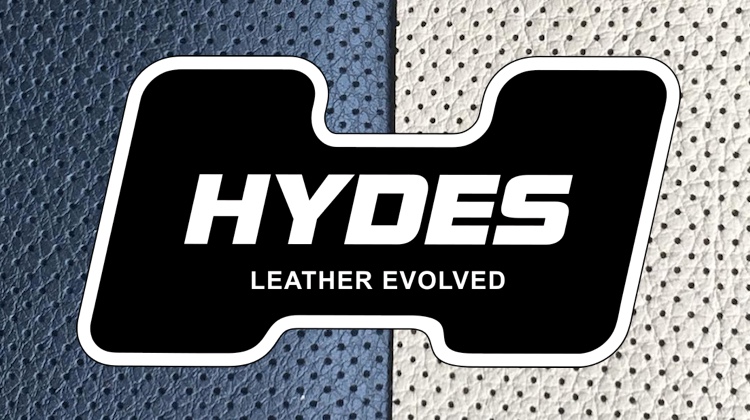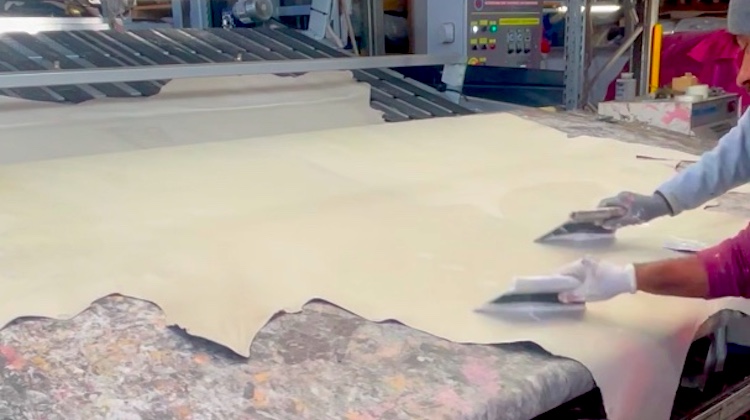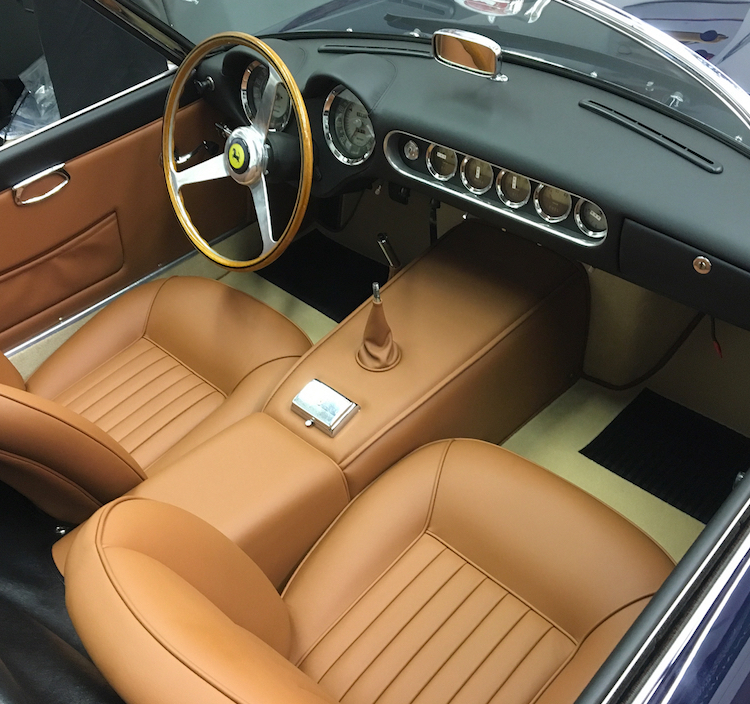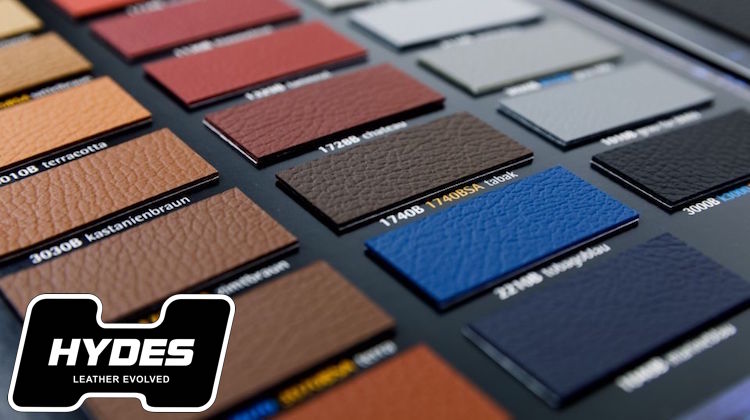
Surely you’ve heard the terms “full grain” and “corrected grain” leather — but what do they mean? And why do luxury OEMs and high-end trim shops prefer to work with full grain?
We recently caught up with Aaron Laithwaite, founder and CEO of Hydes Leather, to better understand the benefits of full grain leather. While Hydes sells both full grain and corrected grain, they are the only leather supplier in North America supplying authentic full grain OEM replacement hides.
What he told us was enlightening, and will surely help us explain the differences to our own clients.
Let’s start from the top: What is full grain leather?
Full grain is a leather that has not been altered or corrected from its original state after slaughter and fleshing. Only very select hides can be used for full grain, as the hides have to be as clean and defect free as possible.
After dying, full grain hides may be left in their original texture with variations in different areas of the hide. But in the auto industry, we want the highest yield possible, so once the dying is complete, full grain automotive leathers are simply printed with a Nappa grain to create a uniform appearance.
Full grain leather is the only choice of high end luxury brands of Europe.
Ok, so then what is corrected grain leather?
Correcting leather is the practice of applying a flexible stucco or Mastic to the leather to fill any defects and flaws in the hide. This can be anything from the tissues surrounding a healed scar, filling an open wound or scar that didn’t heal, filling scratches from sharp objects the animal may have rubbed against, and even parasitic scars from pests biting the animals.
Here’s an example of stucco being applied to a lower quality raw material:

The stucco is spread over the hide with large knives or trowels. It is dried, then goes through a drum sanding to remove a small amount of the dermal layer and the surplus stucco. What is left is a grain free hide, completely smooth to the touch. The leather is then processed for finishing and then the last step is embossing the Nappa grain back into the hide.
If both look similar, why does it matter which you use?
When Luxury car makers use full grain leather, it is because they can’t afford to have corrected grain flaws coming through over time in their cars. They are seeking perfection.
The benefits of full grain leather are a more natural feel, it’s less processed and less pigment dye is needed, which helps it age and patina better. Because nothing is hidden under correction, there are no scars or blemishes that can surface after templating or after installation and use by the customer.
The drawback is the higher price and potentially a slightly lower yield.
Meanwhile, the benefits of corrected grain leather are the cheaper price point and a completely consistent surface look to the leather, at least at first.
The drawback to correct grain leather is that covered corrections can begin to show after templating or customer use. It’s also a less authentic product and has a more processed feel to it.
When you are upholstering a six- or seven-figure car for your clients, you want to be using the highest grade of leather you can to match the car. The painter will use the highest quality paint he can get, so why not get the best quality leather too?
If full grain leather is so good, why does it sometimes come with scars and holes?
As mentioned, full grain leather has not been altered from its original state. The natural defects are visible, and this is intentional. OEMs simply cut around them.

Doesn’t that impact yield?
Yes and no. It’s a well known fact that Bentley, Lamborghini and others consume as many as 15 hides of full grain leather to trim the interior of a single car. That’s because they’re only using the best portions of a hide.
When we supply you leather for your projects, we know that you are budgeting for approximately 5 hides to trim an interior. Therefore, we have to purchase an even higher grade of raw material than that of the OEM bulk supply so that you can get maximum yield from your leather.
So is it bad to use corrected grain leather?
No, I’m not saying that. We sell both full grain and corrected grain. Sometimes the budget just doesn’t allow for full grain, and that’s just fine. But you should know they’re not equal.
Have you noticed more shops choosing full grain over corrected grain leather?
Yes, particularly in higher-end show cars.
I really appreciate where our industry is headed. Interiors used to be the very last thought with the smallest budget in the entire build. But because of you guys, we are pushing the possibilities and showing that the interior is seriously important to a quality build. It’s the area of the car that is the most tactile, and sensory fulfilling. Sight-touch-smell. Like we always say at Hydes… It’s what’s inside that counts.

What makes Hydes Leather the go-to source for full grain OEM leather?
Hydes Leather is the only leather supplier offering authentic full grain OEM replacement hides. We work with the tanneries that supply the European luxury brands to bring the best quality to the automotive aftermarket. Our competitors provide corrected grain leather that has been processed and dyed to match OEM. Don’t be fooled, it is not OEM, but merely a color matched replica.
What’s your response to trimmers who say Hydes is too expensive?
I often hear the argument that “we can get it cheaper.” Yes, you certainly can. We don’t suggest we are the cheapest leather supplier in the market. What we are heartily saying is that we provide the highest quality available in the automotive market. We don’t use corrected grain leather for OEM replacement because that is not something an OEM manufacturer would do either.
They don’t compromise, neither do we, and neither should you.
To learn more about Hydes Leather, visit their website and subscribe to their YouTube channel. Of course, you can also find them on Instagram and Facebook.
Recent Comments